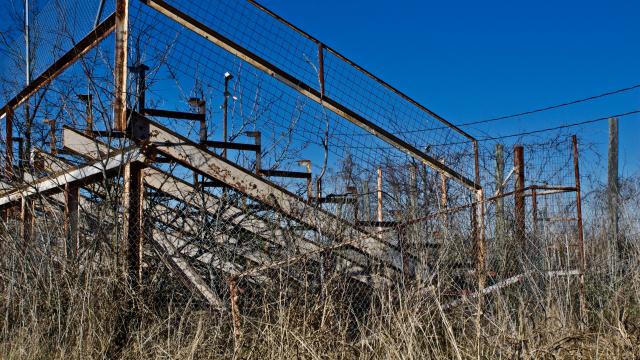Other than a weekend flea market that draws a decent crowd, things are pretty quiet at the corner of U.S. 183 and FM 812 in southeast Austin. There’s a VFW post, a small Circle K gas station and scattered Mexican restaurants.
AU Editor’s Note: This is a story about a small, local circuit race track in small-town Texas. But it’s representative: the same thing has happened to so many of Australia’s smaller, enthusiast-run race tracks in the last few decades. We think it’s an interesting, if sad, read. — Cam
Not much directly lines the highway, either, except for dirt roads and some high grasses that could be a vibrant green or a stiff, dead brown depending on the time of the year. But if you look down the gravel road leading to that flea market and strain your eyes just enough, some faint white lines will come into view — lines that used to mark the lanes on a race track.
Not far underneath the low-flying aeroplanes descending into Austin-Bergstrom International Airport lies the old quarter-mile Longhorn Speedway, a former local short track which resides, defunct and wilting from age, under five miles away from Circuit of The Americas — the shiny, new 5km international motorsports facility that hosted nearly 270,000 spectators over its Formula One weekend in the fall of 2016.
Over the years, Longhorn has joined hundreds of other race tracks across the U.S. and become what’s commonly known as a “ghost track” — a racing facility that, for whatever reason, eventually closed its gates and was left to crumble. The phenomenon stretches from local race tracks to ones that used to host NASCAR’s top divisions, such as North Carolina’s old North Wilkesboro Speedway that operated from 1949 to 1996 and hosted 93 races in what’s now known as the top-level Monster Energy NASCAR Cup Series.
The main grandstands at Longhorn used to face away from the highway, the spectators a sea of colored dots amongst a small press box and a flag stand on the start-finish line. Just past that line, spectators would see a Miller logo painted across the asphalt. Sometimes it would be red and sometimes black, depending on the specific product it advertised from the brewing company.
In 1966, a family of three could get into the show for $US3.50 total.

A History Of Speed
For decades, the starting grid used to line up for photos in front of those grandstands before firing up their engines to race around the old track. Throughout the early days, male race winners sported their high-waisted, light-wash jeans and thick mustaches while standing next to sash-wearing trophy girls with short pumps, gold hoop earrings and voluminous, roller-curled hair.
The big, gold earrings worn by trophy girls, whether they were Miss Miller Genuine Draft or Miss Miller High Life, flowed seamlessly with the plastic gold trophies they handed to the race winners. Longhorn’s distinctive winning race flags often had black-and-white checkers bigger than the rose-tinted sunglasses—and the regular glasses, for that matter—of the era, and purse money would likely go into getting the car ready for next weekend’s race rather than thickening up the winner’s wallet.
The race cars, often wearing few company logos and culminating in a week’s worth of one’s own hard work and grease rather than sponsorship funding, used to head into the first turn at Longhorn in front of another set of occupied grandstands. Drivers would see at least two more sets of crowds as they battled their way around to the backstretch, most of their cars wearing the dents of weekends past and giving off the rough, unpolished vibe that short-track racing often does.
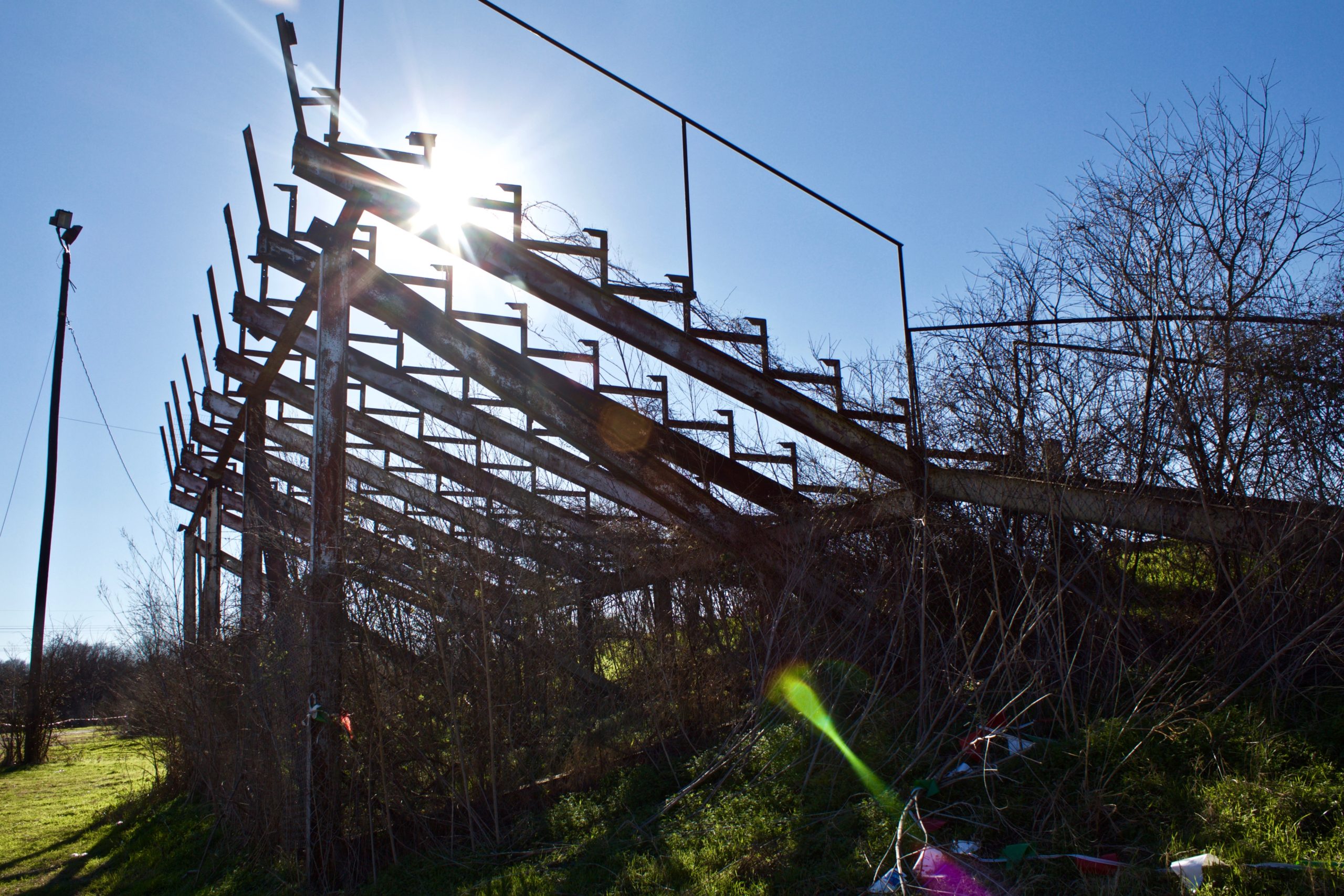
The drivers weren’t so polished, either. In a practice session before the first race under the new name of Capital Speedway, driver Chief Swinford told the Austin American-Statesman that his 1955 Chevrolet handled “like a washtub with a fat woman sitting on it.” Another driver, Homer Newland, muttered “unprintable words” about driving 3,600 miles on his admittedly zigzagging way from Detroit to Austin while managing to stay under the speed limit.
Some paint schemes had the classic flames, others a neon design to stand out. In Longhorn’s four decades, there was at least one Confederate flag on a car: that of Tom Fowler, who advertised being a “the only hell mama ever raised” on his rear quarter panel. There was the occasional race car with a missing fender, and the only paint scheme on some of the others came from a spray can. It was a local operation, and that was just part of the charm.
But it was more than just a local operation in many ways, as are—and were, for many of them—other short tracks across the country.
The Texas racing scene from all those years ago has become a blur for those who used to frequent the track, and they can’t remember whether Terry Labonte, a native Texan and future Cup Series champion, raced at Longhorn. The same goes for Indy car legend A.J. Foyt, who did make at least one trip there as a spectator.
But Labonte did race at other local short tracks across Texas, and even won the first local Late Model track championship at the nearby San Antonio Speedway in 1977. Small-town tracks like Longhorn are exactly where most of those big names get their start, and they serve as the beginning of the pipeline for oval racers nationwide. They’re the club sports of the racing community.
Each time a local track closes, the entry into that pipeline becomes a bit more choked.
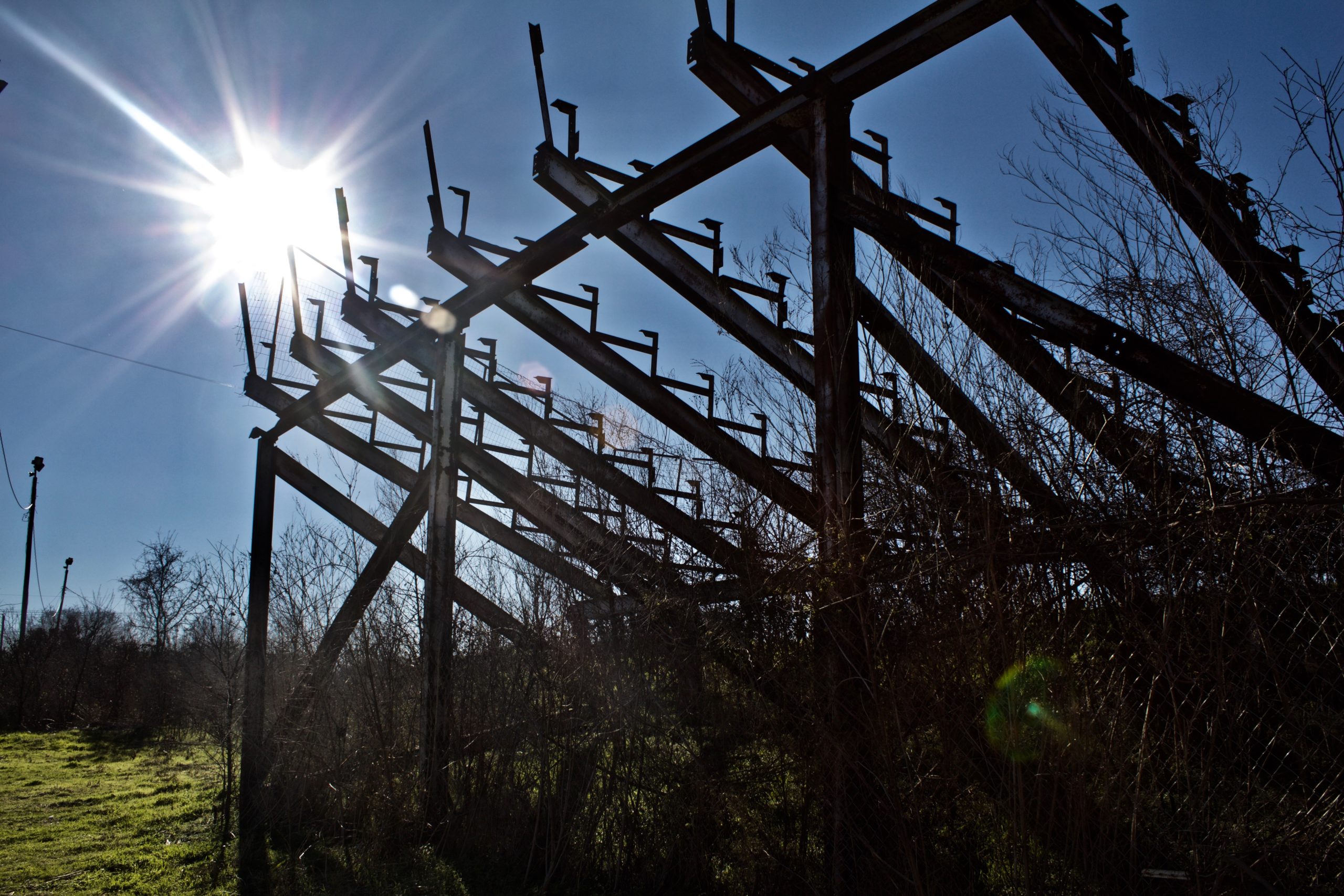
Longhorn closed in 1998 or ’99, depending on whom you ask. Unofficial results online date well into May of 2000. It also originally opened as “Austin Speed-O-Rama” in 1960, only to go through multiple name changes and leaseholders during its nearly 40 years in operation.
A father-son pair by the names of A. B. and Louis Wusterhausen opened the track, owning and managing for eight years before the Statesman reported that a local racing group took over the lease. A. B. died before the lease handover in 1968, and his former race track became known as “Capital Speedway” under its new owners.
The group, led by a drag racer by the name of Jim Tibbitts, promised a prize purse of at least $1,200 per race once their reign began—“much more than any regular race [had] ever payed in Central Texas” at the time, according to the Statesman.
But the reign of that group didn’t last long, and the track quickly went back to its former name—this time, without the hyphens. Business partners Jerry Green and Charles Hester took the speedway over just three years after the racing group did in 1971, promising “exciting, fast-moving” shows and kids’ nights with free rides in figure-eight races.
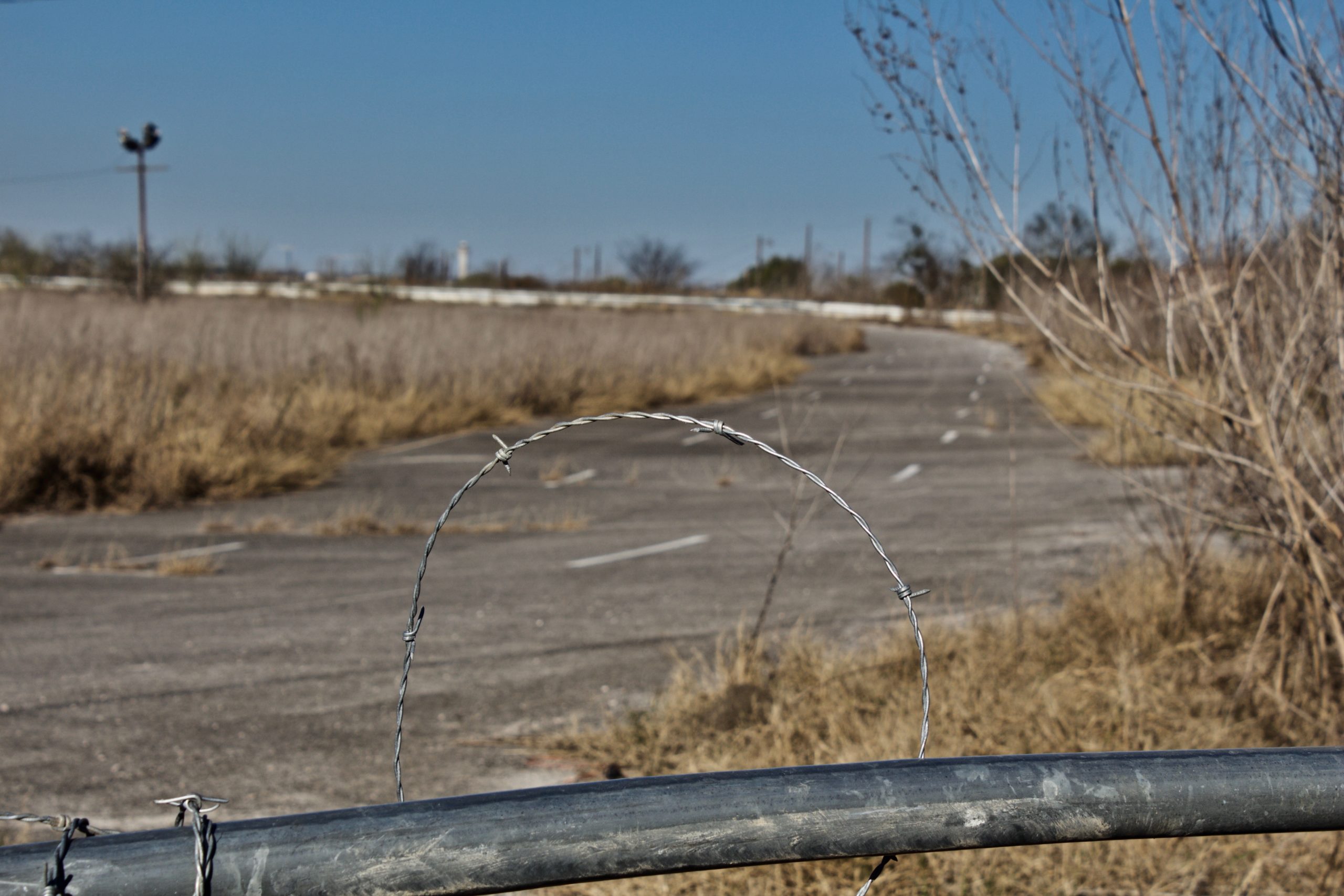
‘They Were Just Family People’
“Longhorn Speedway” was the name under which it eventually closed, with grandstands left to rust and asphalt to crack even further under passive ownership by an Austin realty group.
On the front straightaway at Longhorn, the only structure that remains is a skeleton of the flag stand. There are no main grandstands and there is no press box, giving a clear view from the highway to parts of the backstretch asphalt if you’re looking hard enough.
Another three sets of the once-packed grandstands at Longhorn remain, rusted, contorted with age and visibly fighting off the inevitable forces of overgrown weeds and gravity that continue to overtake them. What were once ramps leading up to the seats are now inaccessible due to the overgrowth, and, even if they could be reached, would buckle under the sheer weight of a person.
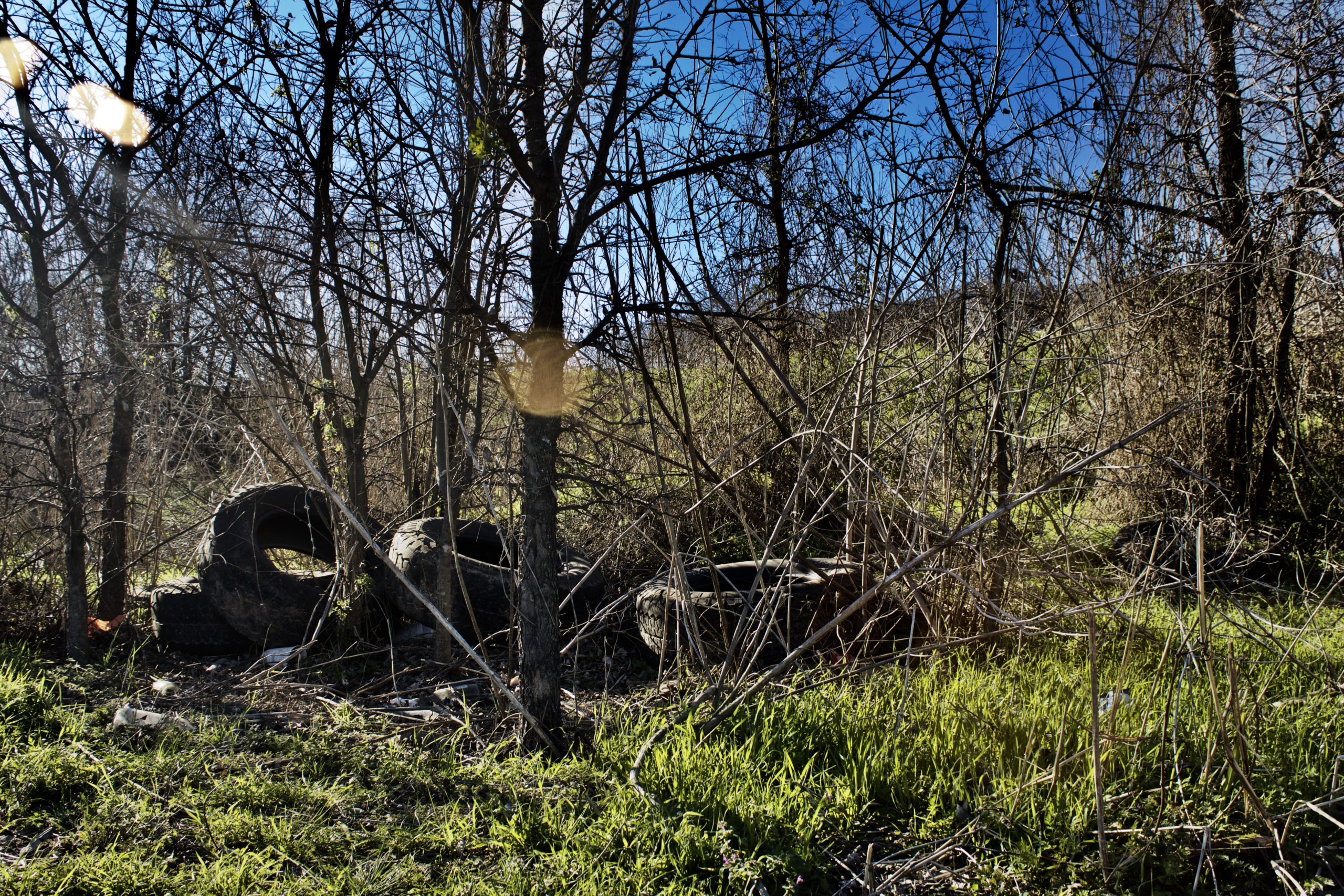
These days, barbed wire lines the property. The old track is so stifled by tall, dead grass that it becomes hard to tell fence from weeds after a while. Underneath the grandstands on the backstretch lays a full set of tires, but the deep grooves of tread indicate that, as spooky as the scene appears to be, they likely aren’t racing slicks from all those years ago.
Nearly 20 years after Longhorn’s closure, the earth underneath its racing surface is even beginning to overtake the track itself. Weeds have begun to creep through the cracks that so characteristically form in asphalt racing surfaces over time, leaving little doubt that the track will all but disappear—as if it isn’t forgotten enough already.

Records on past winners, track record holders and the like are scarce, drivers who raced out there in the 1960s and ‘70s almost impossible to track down. The only tangible things that remain, really, are the photos.
But once you find someone, the memories come to the same general conclusion.
“It was a really good speedway,” said Denise Beier Zuniga, who regularly attended everything from weekly races to demolition derbies, figure-eight racing and stunt shows at Longhorn as a child after moving down from Pennsylvania in the late 1960s. “It could fit a lot of people; it was always crowded. The atmosphere was always charged and fun.
“It was just that atmosphere of a community, being able to connect with the drivers. They were all family people, and a lot of times you would be able to go to school with their kids, or you knew somebody who knew somebody.”
There were a lot of people to know. In its day, former Longhorn Speedway PA announcer Neil Upchurch said the track’s premiere Late Model events—one of the most expensive and therefore exclusive divisions in short-track racing, which features stock cars that appear to the casual eye to be a few years behind the current-generation NASCAR race cars—would pull around two dozen race entries on any given Friday night in the late 1980s and into the ‘90s.
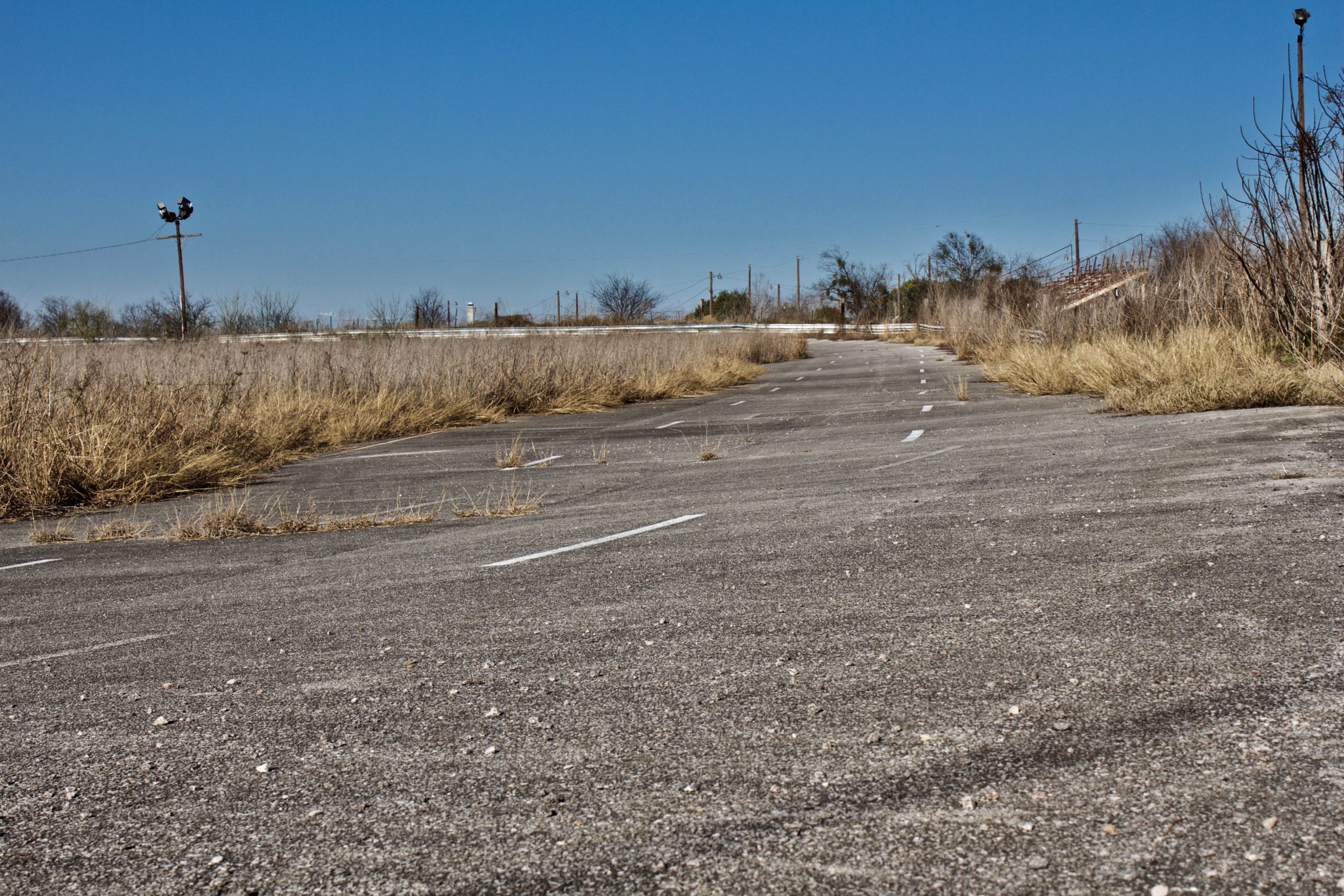
In comparison, modern Late Model car counts at local short tracks nationwide can sink into the single digits.
“When we had that many cars, we had to limit the starting field to 18 or 20 for manual-scoring reasons,” said Upchurch, referring to the days when positions on each lap had to be checked off by hand. “For that reason, qualifications actually fulfilled their name. You had to qualify to be in the feature race, because we couldn’t put all of the cars that were there on the track at once.”
When those cars were out at Longhorn, Upchurch said the grandstands were “absolutely packed.”
“[The stands] couldn’t hold any more,” said Upchurch, who also called races at the old Texas World Speedway in College Station and now-closed short tracks in San Antonio. “I don’t know that they ever stopped selling tickets—I never heard that one. Maybe they said, ‘We’ll sell you a ticket, but you can’t sit down.’”
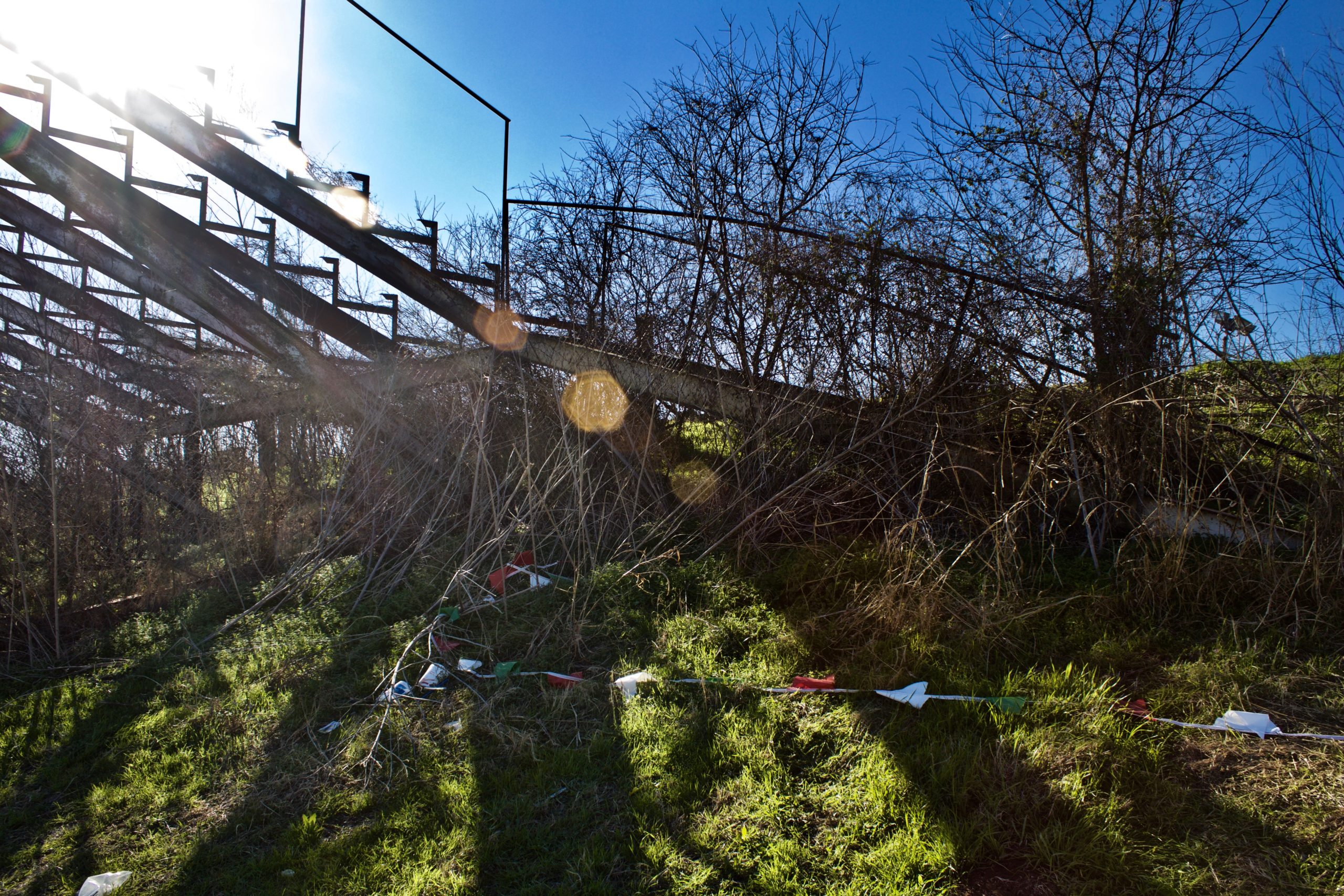
The ‘Best In Texas’
From how Upchurch and Zuniga described it, there wasn’t much of a reason to sit down. Upchurch said the Late Model drivers out at Longhorn were “the best in Texas,” recalling those like Jimmy “Fireball” Finger and Freddy Fryar as some of the most popular behind the wheel.
“The ‘Beaumont Flyer,’ Freddy Fryar,” said Upchurch, summoning back his announcer voice as if he’d called a race yesterday.
Zuniga remembers that voice as if it called a race yesterday, too.
“Ah!” Zuniga said. “I remember Neil!”
She laughed at her office desk, as if she’d been reminded of an old friend she hadn’t thought about in years because life got in the way. After all, Zuniga sat in those grandstands so many years ago that she can remember drivers showing up to race in T-shirts and jeans rather than fire-resistant race suits.
The mention of his name brought back even more memories. As if it happened just last Friday, Zuniga recalled wanting to be a powder-puff driver out at Longhorn. She planned to grow up, head out to the race track and participate in the races she saw all of the adult women running when she was just a child.
But she never got a chance to do it.
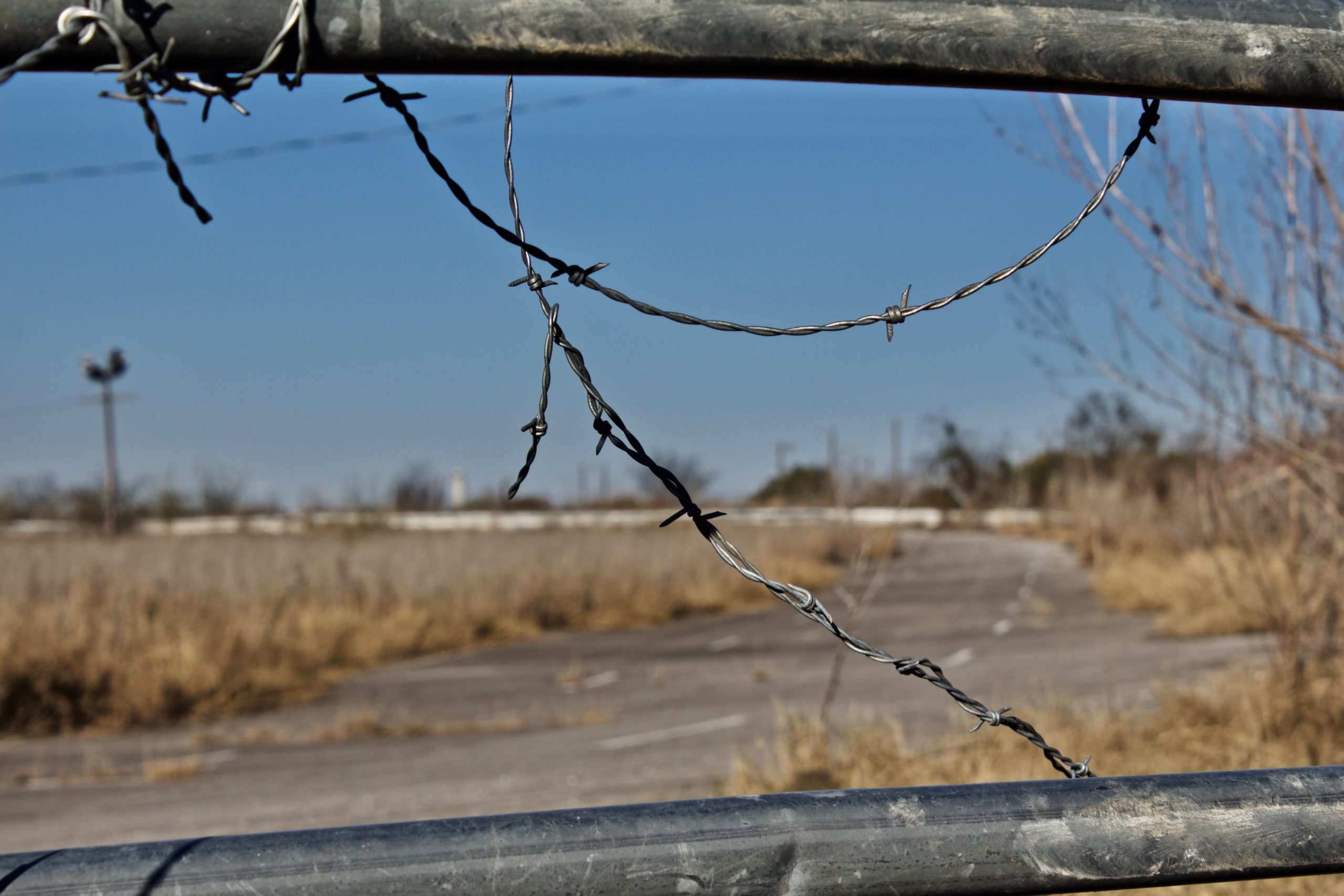
“Back then, you’re thinking that you’re going to be going to the races forever, until the day you die,” Zuniga said. “And I was like, ‘That’s what I want to do, I want to drive powder puff.’
“Sometimes it would be hilarious, because the husbands would hide in the car since some of the women didn’t know how to drive stick. They would do the gears for them, and I remember Neil Upchurch saying one time, ‘So-and-so, you need to get out of that car and let your wife drive, even if it is in first gear!’”
Just as she had after digging up nearly every other memory of the old track, Zuniga laughed. Upchurch did the same. He recalled the night Houston native Foyt made a visit, leaving locals stunned upon signing in at the pit gate.
“One gate lady almost fainted,” Upchurch said. “She couldn’t believe who just signed in.”
But it wasn’t all about the atmosphere or the memories made at Longhorn. It was the race track itself, too. David Umscheid, whom both Zuniga and Upchurch remembered as one of the best drivers to race out there in its day, said Longhorn was “the best racing track that [he] ran on.”
“What I learned there, I could take anywhere in the United States and race,” said Umscheid, who raced at Longhorn from 1978 through around 1990. “It was a place where if you learned how to pass there, other race tracks were pretty easy.
“Longhorn was just smaller. Things happened more quickly. There wasn’t as much room. You pretty much had to be on your game the whole race.”
Things also required so much concentration at Longhorn, Umscheid said, because the track was “not a true oval” in the sense that most oval race tracks are considered to be.
“One end of the race track is a little bit different than the other,” Umscheid said. “[Turns] one and two were a little more of a pointed corner, and three and four were a little rounder corner. You had to drive a little differently on the different ends of the race track.
“But as bad of a shape as the asphalt was at Longhorn, it was still more fun to race on, to me, than any of the other race tracks that we ran at.”

Not everything was fun. Like plenty of other short tracks across the country, there were areas where Longhorn lacked proper safety precautions.
“I wasn’t there at the time, but I know one time a sprint car, out of control, went over the turn-one fence and into the pits where a bunch of people were,” Upchurch said. “Miraculously, it didn’t hit any of them and he wasn’t hurt either—the driver of the car.
“But it did signal the necessity to make intrusion into the pits a little bit more difficult for an out-of-control race car. And they did. They put up some cyclone fencing or something like that.”
A Legend Comes To A Sad End
The pits are now a gravel parking lot for a food truck, the fence serving no other purpose but to keep trespassers from accessing the first turn on the now chained-off private property.
Despite working just a few steps from the old speedway, an employee of that food truck said he never encounters anyone with curiosity about the race track. Upon being asked if any visitors ever stop by, he turned his head toward the small part of the banked third turn that could still be seen from the former pit area.
“That thing?” he said. “No, nobody ever comes out here to look at that.”
The only time people pass by it, he said, is on the way to park at that outdoor flea market hosted near the property each weekend. It’s been that way for nearly two decades now.
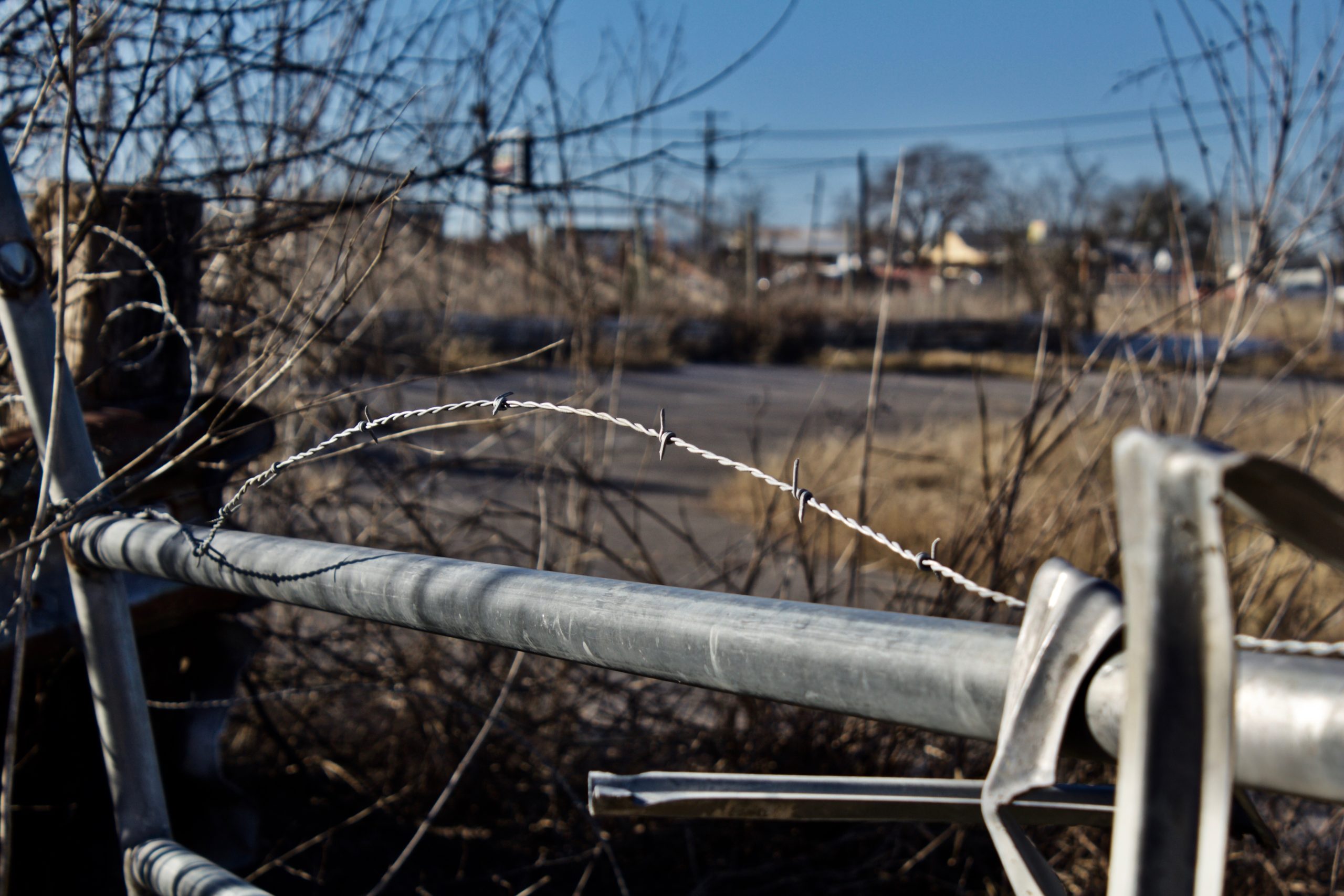
But just over two decades ago, things were still going well at Longhorn—it stayed that way even through the 1990s. The racing surface, bad shape and all, still held up. The Late Model tours still swung through several times a year. The crowds still came, but they didn’t fill as many seats as in decades earlier.
Leaseholders began to change more frequently than they had in the past, and Upchurch said there would be the occasional season that would start later than usual while the new management sorted everything out. In its first year as “Capital Speedway” in 1968, Longhorn managers didn’t open the track until mid April—an entire two months after the year’s Daytona 500.
Even then, Upchurch said none of those blanks in racing were noteworthy in his memory.
Then, as the 1990s came to a close, the real problem set in—a problem far outside of Longhorn’s control. In Upchurch’s memory, that problem helped usher in “the final demise of Longhorn Speedway.”
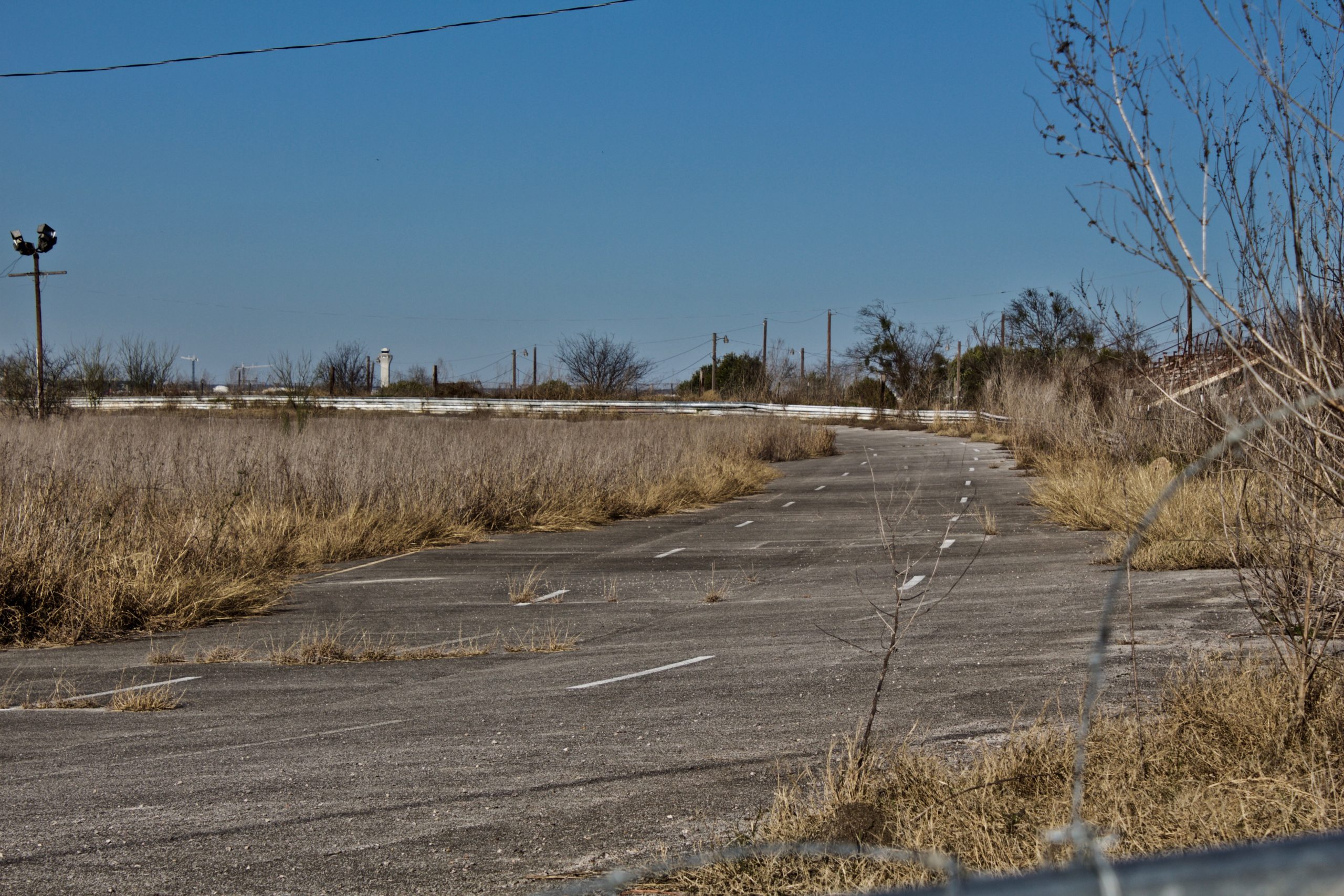
Less than 30 minutes away, construction began on a new asphalt short track that would run local classes on three-eights of a mile in Kyle, Texas. The track opened as Thunderhill Raceway for the 1998 season, its facilities being nearly four decades newer than those at Longhorn.
“Everything at Thunderhill was… it was nice,” Upchurch said.
The leaseholders at Longhorn knew Thunderhill, which would later become known as Central Texas Speedway, was nice. But Upchurch said the race track continued to operate for over a year after Thunderhill opened, only for its management to realize that the track just couldn’t compete.
With that, the demise of Longhorn Speedway became final. The leaseholders gave up the track.
“It was strictly a business decision,” Upchurch said. “The market [in Austin] is not big enough for two short tracks.”
Zuniga visited Thunderhill after Longhorn closed. Her sons were really into racing at the time, and her father said they should take the kids down to the track to give them “the whole experience.”
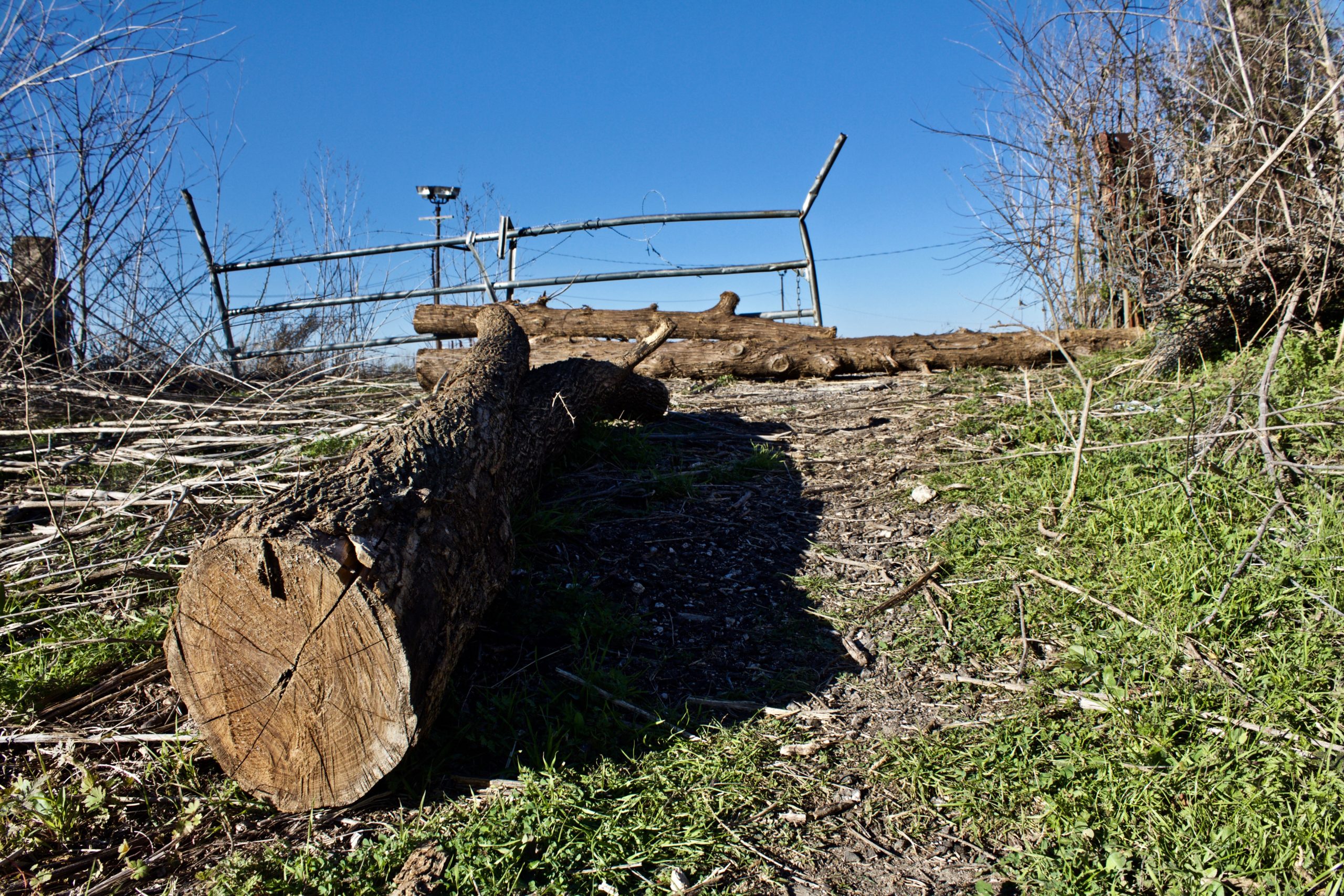
But when they went, things were different. The crowd wasn’t as big; the atmosphere wasn’t the same.
“It didn’t feel as homey as [the racing] once did,” Zuniga said. “There were still the same drivers, Bobby Joe New, Larry Darity and all of them who used to race down at Speed-O-Rama and in San Antonio, but the feel was totally different.”
Within about a decade of Zuniga’s visit with her family, the feel at Central Texas Speedway changed yet again. With almost no notice, leaseholder Tim Self, whose NASCAR-bound son raced out at the track for much of his short-tracking days, decided not to renew his claim on the race track following the 2016 race season. The track closed immediately.
“One by one, every track has faded to black,” Upchurch said.
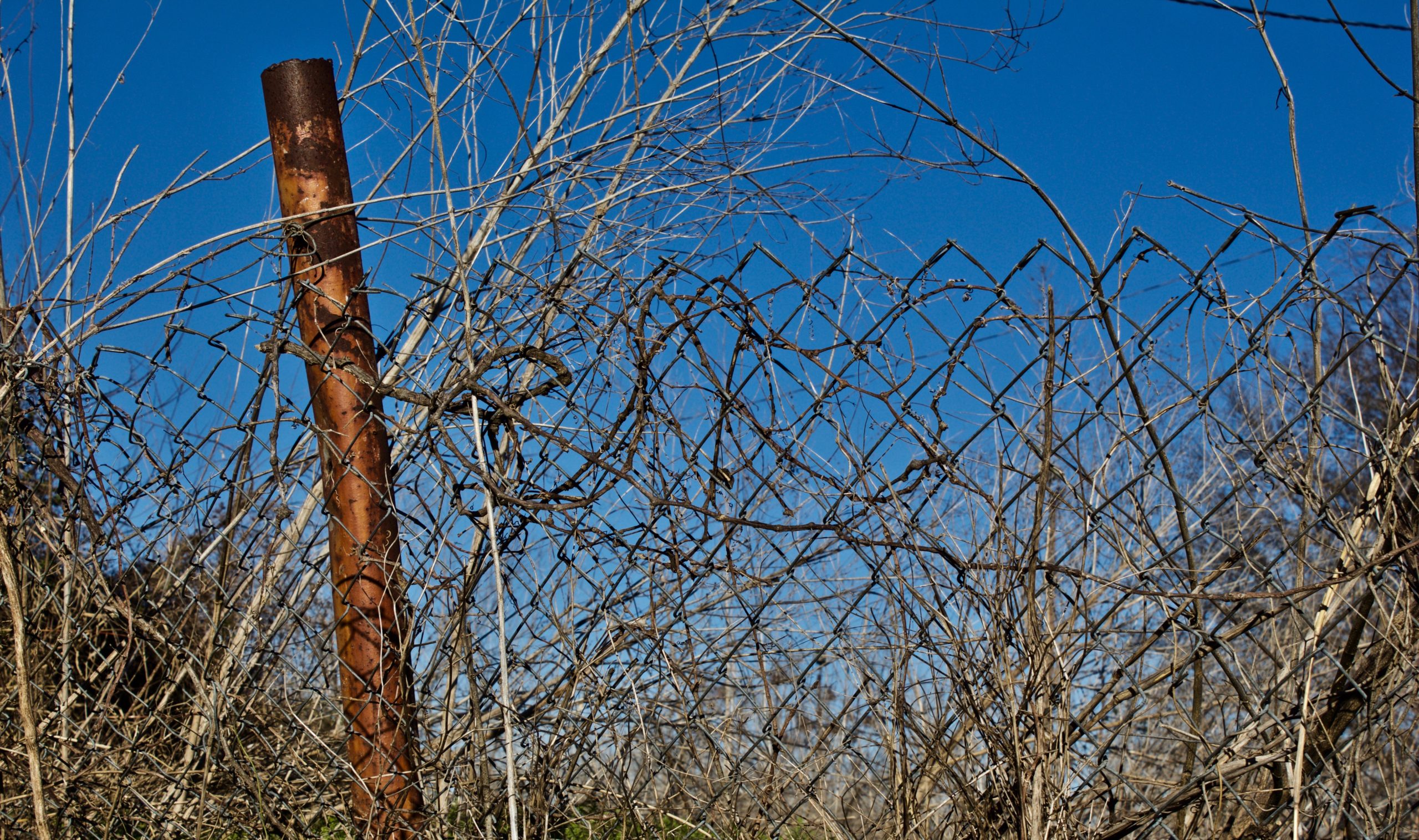
As he called races at different short tracks across the state, Upchurch saw the declining popularity of local short-track racing in Texas as it happened and said it wasn’t singular to Longhorn Speedway or the Austin market. He just can’t pinpoint when things all started to go downhill.
“The [decline] of racing in Texas was, in some cases, so slow that it was hardly noticeable,” Upchurch said. “The reduction and the closure of [asphalt] tracks has been a very slow cancer to creep along and eventually, we have one go down permanently.”
Eventually, all of the asphalt short tracks Upchurch frequented did just that.
The half-mile Meyer Speedway in Houston, which hosted a 1971 Cup Series race in which Bobby Allison and Richard Petty started on the front row in front of 9,000 spectators, went down in the late 1970s. San Antonio Speedway opened in 1977, but closed its gates a few decades later. There were plenty more.
“[San Antonio Speedway] came up a couple of times like a drowning person coming up for a breath of air,” Upchurch said. “And then, it finally just went down and stayed down.
“You would’ve thought that the biggest and best [track] in the remaining biggest market would have lasted the longest, but it didn’t.”
In response to the eventual closures that loomed over all of those race tracks, Upchurch said there are “certain sports, or attractions, that eventually just wear out.”
But the memories of Longhorn didn’t wear out, even though they’re nearly all that’s left for people like Umscheid and Zuniga. Umscheid admitted that Texas in general “has just had a hard time keeping tracks going,” but that doesn’t make things any easier when he passes by the speedway in its crumbling state.
“It breaks my heart,” Umscheid said. “That’s the first race track I came to watch races. And then, both of my kids turned their first laps there. It’s just sad.”
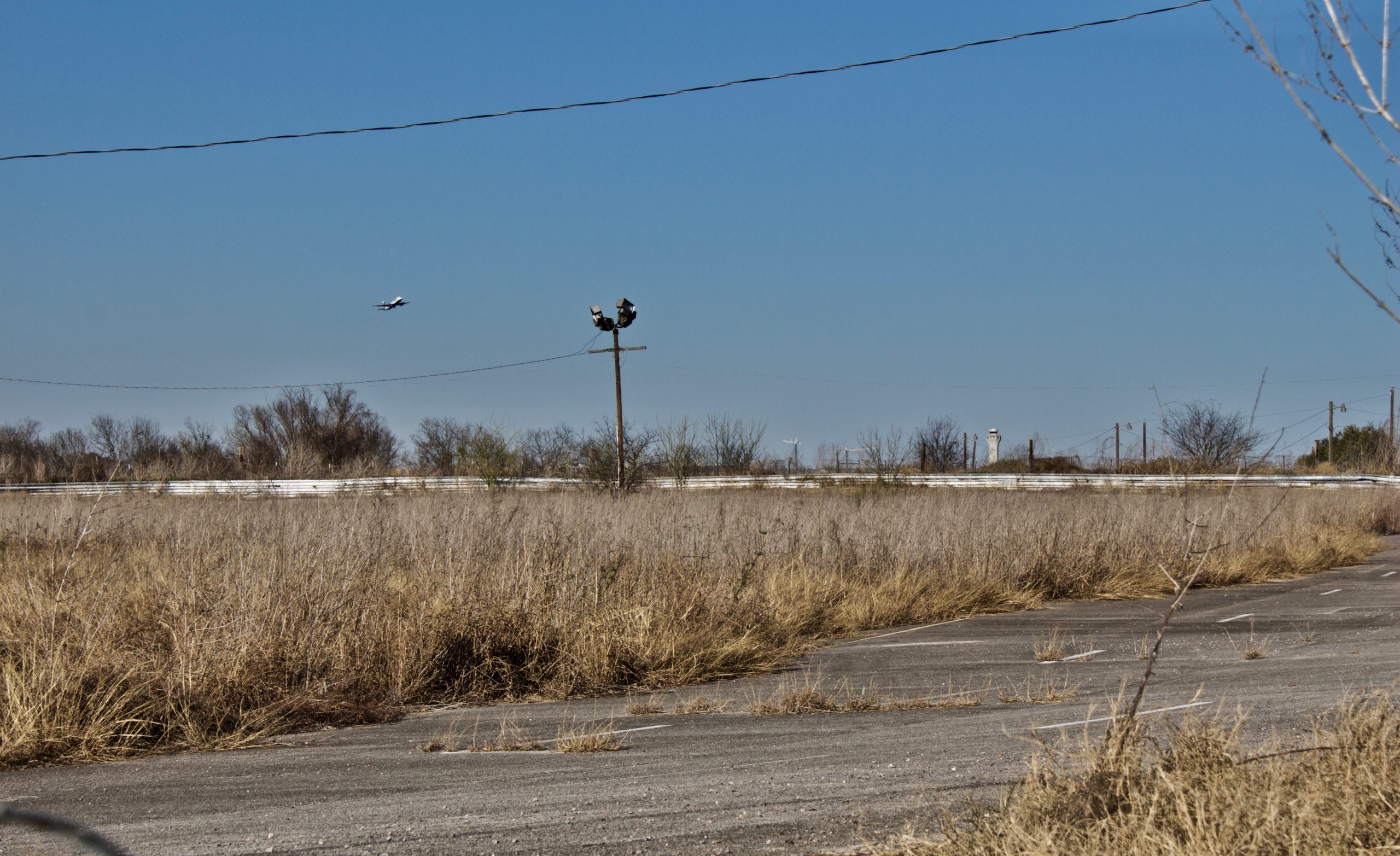
Zuniga passes by it every once in a while, remembering the days of demolition derbies, stunt shows and the Friday-night racing features. Zuniga’s husband was never into racing as a kid, but will ask her where things used to be.
She’ll give him short, direct yes-and-no answers. She’s sure that someday, they’ll pass by there and he won’t have anything to ask about—that the old place will be bulldozed and ready for new construction.
“It’s like losing an old friend,” Zuniga said. “It makes me sad. It really does.”
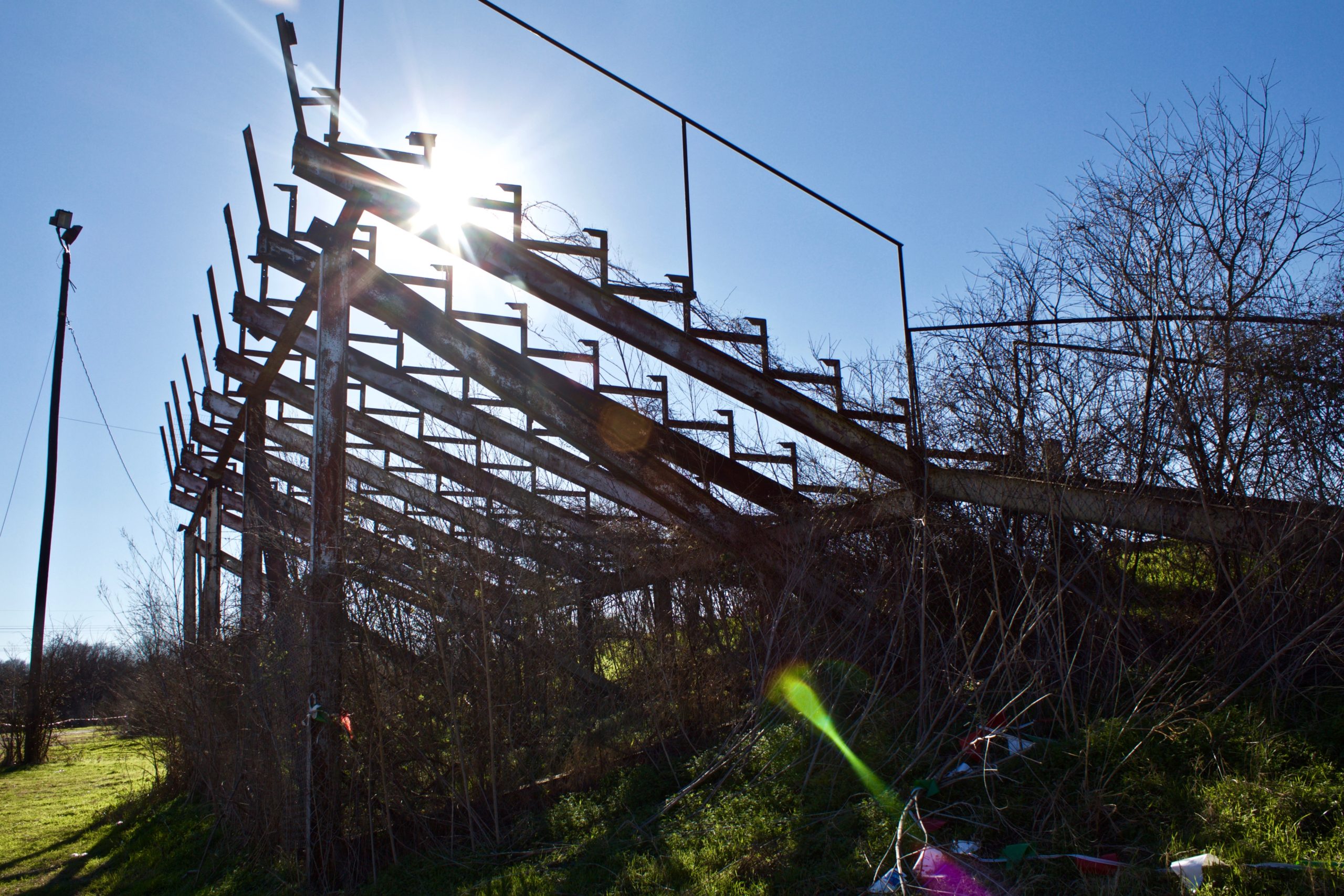
But Upchuch—he seems to have been more expectant of the outcome.
“I could see the demise of racing in the southwest even happening way back then,” he said, recalling that he wore out several cars to drive from his home to the announcing jobs he held simultaneously in Austin, San Antonio and College Station. “With that demise, I was not going to invest in a property because of a track, because the tracks may fail.
“And sure enough, all of them have.”
This story was originally written for Reporting Texas at the University of Texas at Austin. A shortened version of the piece can be read here.
